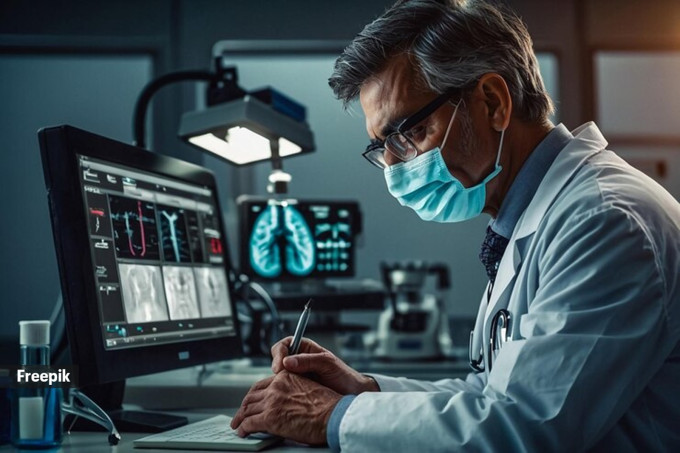Could this food dye used in a nachos brand make skin see-through? Researchers uncover potential breakthrough in human diagnostics
A recent study by scientists at Stanford University has uncovered a surprising potential use for a common food dye found in a popular nachos brand — making skin temporarily see-through.
The experiment headed by Dr Zihao Ou, assistant professor of physics at The University of Texas at Dallas, was conducted to find better methods to see tissue and organs within the body.

“For those who understand the fundamental physics behind this, it makes sense; but if you aren’t familiar with it, it looks like a magic trick,” Dr Ou said.
By applying a mixture containing tartrazine to the skin of live mice, the researchers could make it transparent enough to reveal internal organs and tissues, paving the way for new non-invasive diagnostic methods.
“Optical equipment, like the microscope, is not directly used to study live humans or animals because light can’t go through living tissue,” Ou said. “But now that we can make tissue transparent, it will allow us to look at more detailed dynamics. It will completely revolutionise existing optical research in biology.”
While the experiment has only been conducted on animal models, the results suggest a novel approach to visualising tissues and organs in humans without invasive procedures. This breakthrough raises important questions about the future scope of using food dyes in medical diagnostics, as well as the safety, effectiveness, and potential limitations of this technique.
How does the chemical composition of tartrazine make the skin temporarily transparent?
Dr Jagadish Hiremath, public health intellectual, tells indianexpress.com, “Tartrazine, a common food dye, possesses a unique chemical structure that allows it to strongly absorb specific wavelengths of light, primarily in the blue and ultraviolet range. This absorption alters how light interacts with the skin, effectively reducing its scattering properties.”
“Skin, composed of various components like proteins, fats, and water, typically scatters light, preventing us from seeing through it,” he says. “Tartrazine, when applied to the skin, creates a sort of ‘optical camouflage’ by matching the refractive index (a measure of how a substance bends light) of these skin components. This matching minimises the scattering of light, thereby allowing light to pass through more readily, making the skin appear transparent.”
While this effect has been successfully demonstrated in mice, he states, replicating it in human skin poses a challenge. “Human skin is considerably thicker than mouse skin, potentially requiring a higher concentration of tartrazine or a different delivery method to achieve similar transparency. Further research is necessary to determine the feasibility and safety of applying this technique to humans.”
 Human skin is considerably thicker than mouse skin, potentially requiring a higher concentration of tartrazine or a different delivery method to achieve similar transparency. (Source: Freepik)
Human skin is considerably thicker than mouse skin, potentially requiring a higher concentration of tartrazine or a different delivery method to achieve similar transparency. (Source: Freepik)
Potential medical applications of this technique in human diagnostics
The potential medical applications of this technique are vast and exciting, Dr Hiremath addresses. “It could revolutionise medical imaging by enabling non-invasive visualisation of internal structures and processes. Imagine being able to observe blood vessels, tumours, or even nerve activity in real-time without the need for surgery or harmful radiation. This would significantly improve early detection and diagnosis of various diseases, leading to more effective and timely treatment.”
Moreover, he mentions that this technique could enhance drug delivery and monitoring. By visualising drug distribution within the body, clinicians could optimise dosages and ensure targeted delivery to specific tissues, minimising side effects and improving therapeutic outcomes.
However, the timeline for clinical implementation remains uncertain. Extensive research is required to address safety concerns, optimise dye delivery methods for human skin, and develop compatible imaging technologies.
Side effects or risks associated with applying tartrazine or similar dyes to human skin
While tartrazine is generally considered safe as a food additive, Dr Hiremath agrees that its safety for direct application on human skin for medical imaging purposes remains largely unexplored. Potential side effects or risks include skin irritation, allergic reactions, and the possibility of the dye being absorbed into the bloodstream, potentially affecting other organs.
“Furthermore, the long-term effects of repeated dye application on human skin are unknown. It’s crucial to conduct comprehensive safety studies to identify and address any potential risks before this technique can be considered for widespread clinical use,” he says.
How should tartrazine or similar dyes be safely removed from human skin after use?
Dr Hiremath informs, “The researchers in the study used a simple washing technique to remove tartrazine from the mouse skin. However, translating this to human skin might be more complex. The thicker skin and potential for dye absorption could necessitate alternative removal methods.”
Potential complications could arise if the dye is not completely removed or if it interacts with other substances on the skin, he reveals, leading to irritation or allergic reactions. Further research is needed to establish safe and effective removal protocols for human application.
| DISCLAIMER: This article is based on information from the public domain and/or the experts we spoke to. Always consult your health practitioner before starting any routine. |
📣 For more lifestyle news, click here to join our WhatsApp Channel and also follow us on Instagram
Disclaimer: The copyright of this article belongs to the original author. Reposting this article is solely for the purpose of information dissemination and does not constitute any investment advice. If there is any infringement, please contact us immediately. We will make corrections or deletions as necessary. Thank you.
